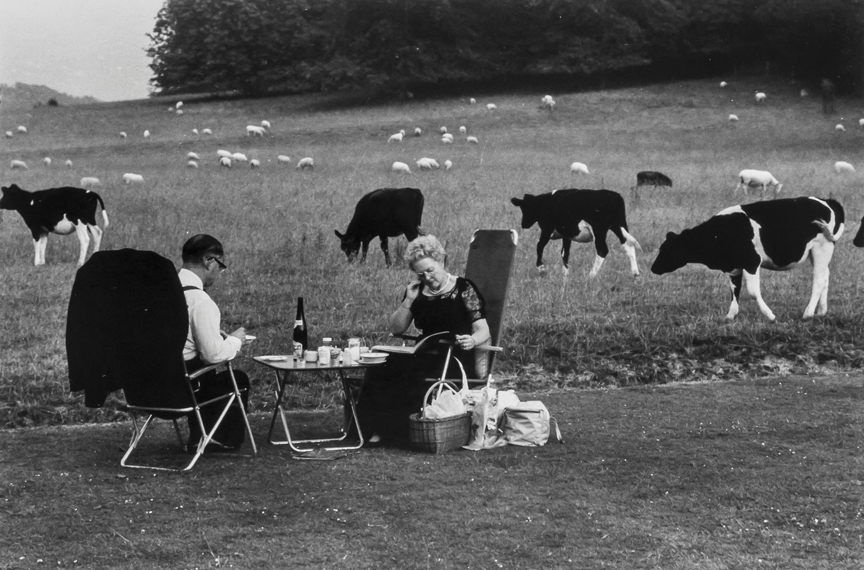Ray-Jones’ attitude towards life was to expose its “gentle madness” and “to walk, like Alice, through a Looking-Glass, and find another kind of world with the camera.”
He preferred to photograph situations that are “ambiguous and unreal, and the juxtaposition of elements seemingly unrelated, and the people are real.”
There is no better example of humor and gentle madness in Ray-Jones’ photographs than at Picnic at Glyndebourne. The contrast of the formally attired couple seated at a folding table in a meadow, oblivious to a group of nearby cows, seemed unreal. Of course, it’s a snapshot of Glyndebourne opera lovers picnicking on the lawn during the interval.
The fantasy here is that the picnickers and the cows are not in the same field, separated by unseen ha-ha!—a ditch that keeps the Glyndebourne crowd out of the cow field.
Featured Image: A traditional picnic on the lawn at Glyndebourne Opera House. Tony Ray-Jones. Picnic at Glyndebourne (1967), black and white gelatin print on paper. Copyright Estate of Tony Ray-Jones.
See A Day off: An English Journal, London: Thames & Hudson,1974; Creative Camera (October 1968); Richard Erhlich. Tony Ray-Jones. New York: Aperture; Russell Roberts. Tony Ray-Jones. London: Chris Boot Ltd, 2004

